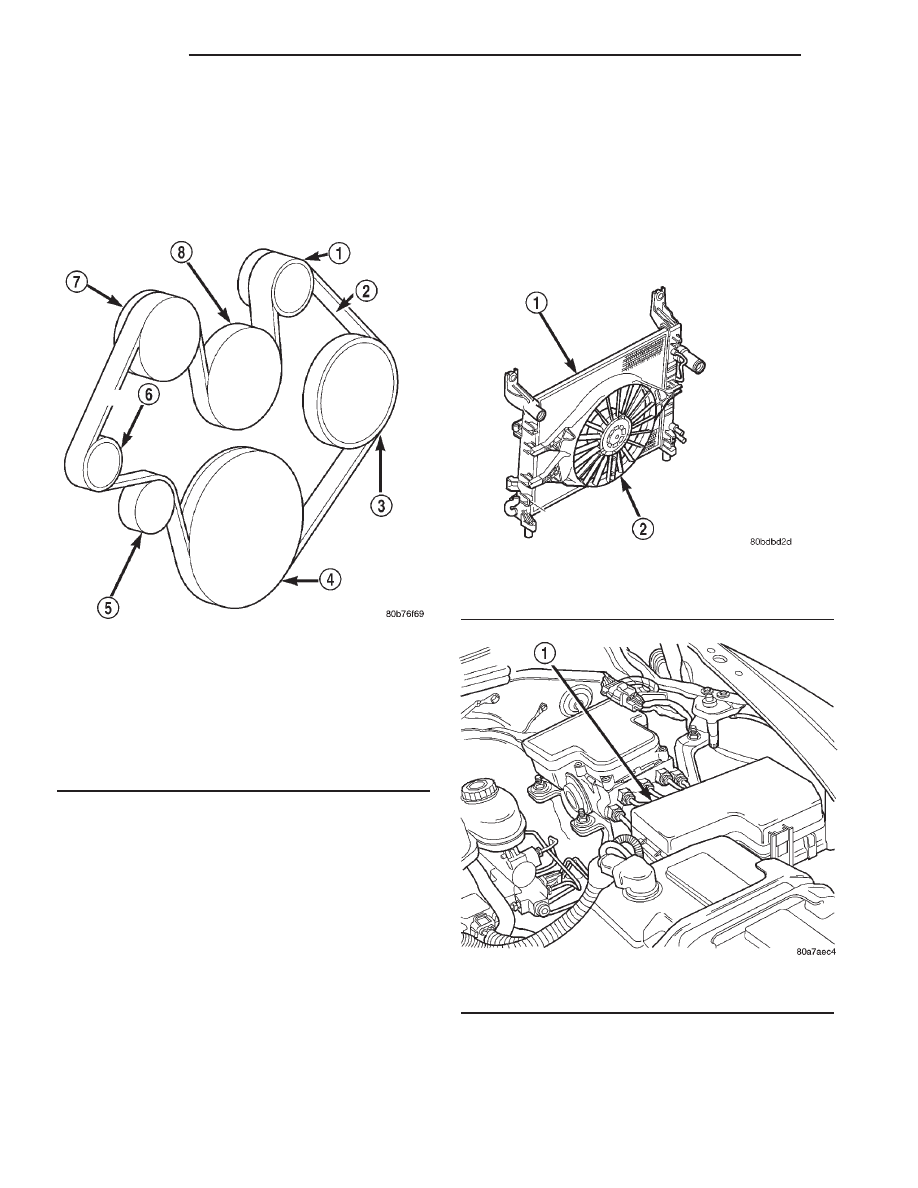Dodge Dakota (R1). Manual - part 262

CAUTION: When installing the serpentine accessory
drive belt, belt must be routed correctly. If not,
engine may overheat due to water pump rotating in
wrong direction. Refer to (Fig. 55) for correct belt
routing. Or, refer to the Belt Routing Label located
in the engine compartment. The correct belt with
correct length must be used.
(6) Position upper fan shroud and fan blade/vis-
cous fan drive assembly.
(7) Be sure the upper and lower portions of the fan
shroud are firmly connected. All air must flow
through the radiator.
(8) Install two fan shroud-to-radiator screws (Fig.
52).
(9) Be sure of at least 25 mm (1.0 inches) between
tips of fan blades and fan shroud.
(10) Install fan blade/viscous fan drive assembly to
water pump shaft (Refer to 7 - COOLING/ENGINE/
FAN DRIVE VISCOUS CLUTCH - INSTALLATION).
(11) Fill cooling system (Refer to 7 - COOLING -
STANDARD PROCEDURE).
(12) Connect negative battery cable.
(13) Start and warm the engine. Check for leaks.
RADIATOR FAN - ELECTRIC
DESCRIPTION
The fan (Fig. 56) is electrically controlled by the
powertrain control module (PCM) through the fan
control relay. This relay is located in the power dis-
tribution center (PDC) (Fig. 57). For the location of
the relay within the PDC, refer to label on PDC
cover.
Fig. 55 Belt Routing 4.7L
1 - GENERATOR PULLEY
2 - ACCESSORY DRIVE BELT
3 - POWER STEERING PUMP PULLEY
4 - CRANKSHAFT PULLEY
5 - IDLER PULLEY
6 - TENSIONER
7 - A/C COMPRESSOR PULLEY
8 - WATER PUMP PULLEY
Fig. 56 Electric Fan Assembly—Typical
1 - RADIATOR
2 - ELECTRIC FAN ASSEMBLY
Fig. 57 Power Distribution Center (PDC)
1 - POWER DISTRIBUTION CENTER (PDC)
7 - 60
ENGINE
AN
WATER PUMP - 4.7L (Continued)